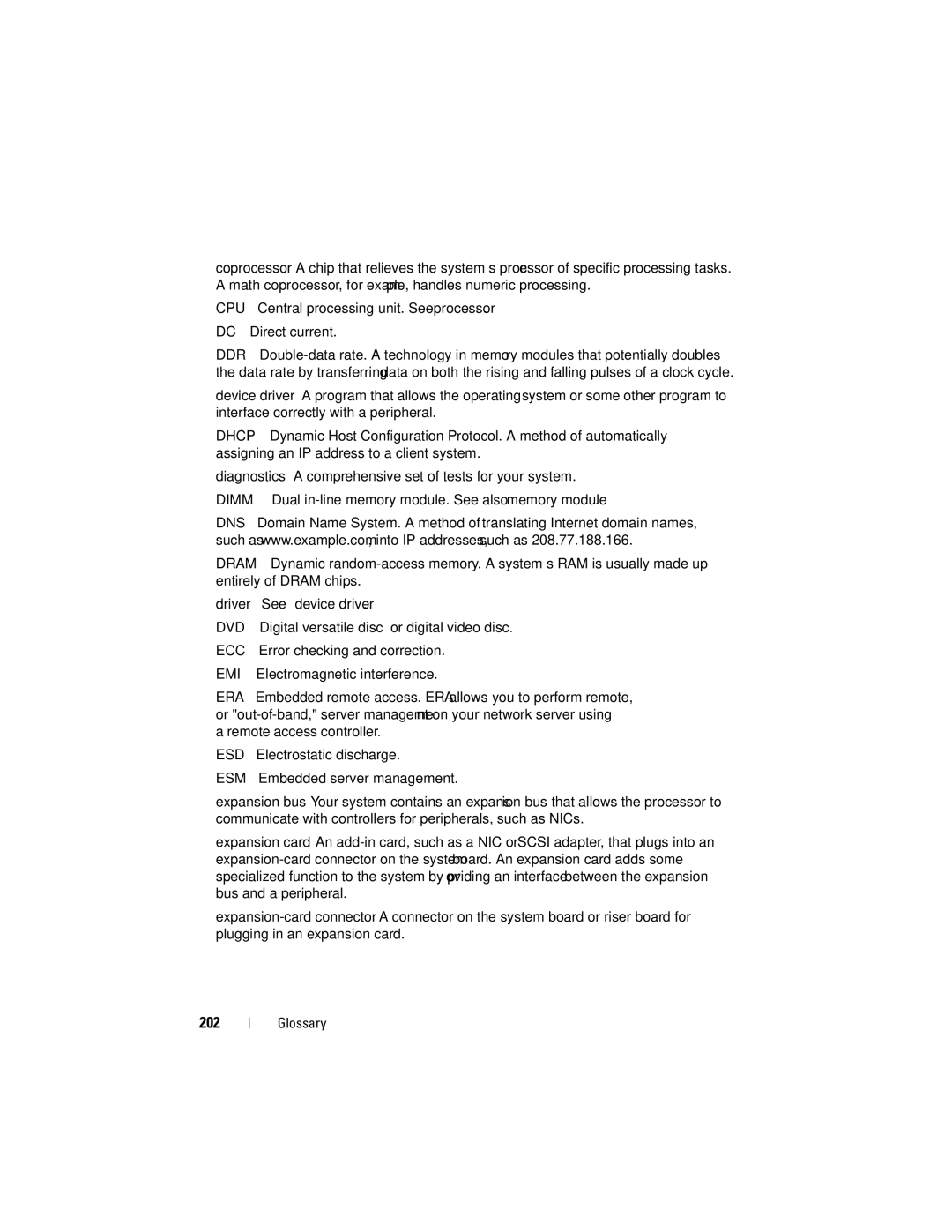coprocessor — A chip that relieves the system’s processor of specific processing tasks. A math coprocessor, for example, handles numeric processing.
CPU — Central processing unit. See processor.
DC — Direct current.
DDR —
device driver — A program that allows the operating system or some other program to interface correctly with a peripheral.
DHCP — Dynamic Host Configuration Protocol. A method of automatically assigning an IP address to a client system.
diagnostics — A comprehensive set of tests for your system.
DIMM — Dual
DNS — Domain Name System. A method of translating Internet domain names, such as www.example.com, into IP addresses, such as 208.77.188.166.
DRAM — Dynamic
driver — See device driver.
DVD — Digital versatile disc or digital video disc.
ECC — Error checking and correction.
EMI — Electromagnetic interference.
ERA — Embedded remote access. ERA allows you to perform remote, or
a remote access controller.
ESD — Electrostatic discharge.
ESM — Embedded server management.
expansion bus — Your system contains an expansion bus that allows the processor to communicate with controllers for peripherals, such as NICs.
expansion card — An
